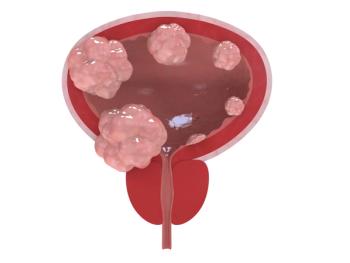
Oncology NEWS International
- Oncology NEWS International Vol 9 No 10
- Volume 9
- Issue 10
Colonoscopy Detects Neoplasias Not Found by Sigmoidoscopy
PORTLAND, Oregon-Two large studies of colonoscopy as a primary screening tool for colon cancer show that the procedure detects advanced proximal neoplasias that would not be found with sigmoidoscopy.
PORTLAND, OregonTwo large studies of colonoscopy as a primary screening tool for colon cancer show that the procedure detects advanced proximal neoplasias that would not be found with sigmoidoscopy.
David A. Lieberman, MD, of Oregon Health Sciences University and Portland Veterans Affairs Medical Center, led a study of 3,121 asymptomatic patients at 13 Veterans Affairs centers who underwent colonoscopy. The examination found one or more neoplastic lesions in 37.5% of patients. Of the 1,765 patients with no polyps in the distal colon, 48 (2.7%) were found to have advanced proximal neoplasms.
Patients with adenomas of any size in the distal colon were more likely to have advanced proximal neoplasia than were patients with no distal adenomas (odds ratio for patients with small adenomas, 2.6; for patients with large adenomas, 3.4). However, 66 (52%) of the 128 patients with advanced proximal neoplasia had no distal adenomas. Sigmoidoscopy would have missed these abnormalities (N Engl J Med 343:162-168, 2000).
Few Serious Complications
Of the more than 3,000 colonoscopies performed, all by the study investigators, who were selected because of their extensive experience with colonoscopy, there were only 10 serious complications during or immediately after the procedure (0.3%). There were six cases of gastrointestinal bleeding requiring hospitalization and one case each of myocardial infarction, cerebrovascular accident, Forniers gangrene, and thrombophlebitis. There were no perforations and no deaths related to the procedure.
Dr. Lieberman reported that 73.3% of the cancers identified on screening had no nodal involvement or distal spread. These data suggest that screening with colonoscopy in asymptomatic men can detect early and potentially curable advanced neoplasia, he said.
In the second study, from Indiana University, 1,994 asymptomatic adults underwent colon-oscopy screening. Thomas F. Imperiale, MD, reported that those who had polyps in the distal colon were more likely to have advanced proximal neoplasia than those without distal polyps. However, 23 (46%) of 50 patients with advanced proximal neoplasia had no distal polyps, for a prevalence of 1.5% (23 of 1,564 persons with no distal polyps).
Time to Go the Distance
In an editorial, Daniel K. Podolsky, MD, of Massachusetts General Hospital, called for both government and private insurers to provide coverage for primary colon cancer screening with colonoscopy for all average-risk persons 50 years of age or older.
Relying on flexible sigmoidoscopy is as clinically logical as performing mammography of one breast to screen women for breast cancer, Dr. Podolsky said. It is time to go the distance.
Articles in this issue
about 25 years ago
HER-2/neu Activation May Predict Breast Cancer Prognosisabout 25 years ago
Company Offers Computer-Aided Detection of Breast Cancerabout 25 years ago
ASBD, an Interdisciplinary Group, Fights Breast Cancerabout 25 years ago
How Employers Can Help Caregivers in the Workplaceabout 25 years ago
Only Slight Improvement in Hepatocellular Carcinoma Survivalabout 25 years ago
New BRCA1 Mutations Found in Black and Hispanic Womenabout 25 years ago
Study Shows Profile of At-Risk Elderly Lung Cancer Patientsabout 25 years ago
Scientific Studies Support Strategies to Curb Nicotine Addictionabout 25 years ago
Smoking Declines Among High School Males, But Not FemalesNewsletter
Stay up to date on recent advances in the multidisciplinary approach to cancer.

















































































